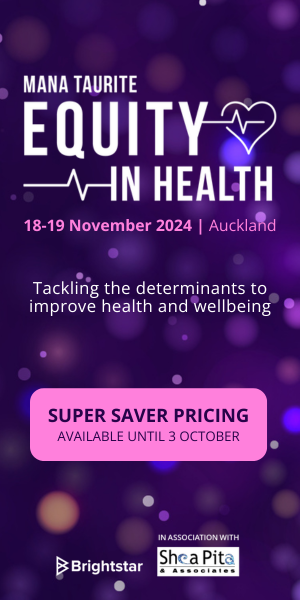* Reading this article equates to 15 minutes of CPD time.
From a consumer’s perspective, the benefit of having ample stocks of medicine at home (and perhaps at work) may outweigh any wider considerations about appropriate supply.
But prescribers and dispensers do need to consider the potential consequences of oversupply. Such considerations can include the cost of wasted medicine, the effect on the environment if they are discarded into wastewater or landfills, stress on the distribution chain and family safety.
NOTES FOR NURSES
- When seeing patients, nurses and nurse prescribers should be mindful of the possibility of oversupply of medicines. They’re well placed to advise on safety, use and storage.
- This article may be of interest to nurses and nurse prescribers working with patients who are on multiple medicines, eg care of the elderly
- This article raises safety issues not only for the patient but also for their family, particularly children who may be in households where medicines are stockpiled
“Appropriateness” is one of the five drivers of medicines access equity in Aotearoa New Zealand, along with availability, accessibility, affordability and acceptability.1 Appropriateness requires prescribing and dispensing in a manner that meets patient need and avoids unwarranted variation in the use of medicines.
This is achieved when clinical expertise and evidence-based practice are combined with a patient’s preferences, values, experiences, culture and beliefs.2
How medicines accumulate in the home
A survey of 452 New Zealanders from around the country, reported in 2009, found more than 60 per cent of respondents said they had leftover or unwanted prescription medications in their home. Fewer than one in four people returned their pharmaceutical waste to pharmacies.3
A 2016 Australian audit of 704 tonnes of unwanted medicines found the most commonly returned medicines were unexpired opened packets of medicines for the treatment of acute conditions.4
Internationally, for medicines returned to pharmacies, studies have shown:
- 65 per cent of items contained greater than 65 per cent of the amount originally supplied.5
- 66 per cent of items were medications dispensed for greater than a one-month period.6

Overprescribing is just one reason unused medications accumulate in the home, but it magnifies the problem when other events come into play. These include:
- A patient’s death.
- Change of treatment or dose.
- Adverse effects or lack of efficacy leading to treatment cessation.
- Resolution of the condition.
- Dispensing not being individualised to patient need.
- Expiry of medicines.
- Non-adherence due to, for example: poor memory; physical barriers (eg, difficult packaging); complex or asymptomatic conditions, such as hypertension, and lack of education/understanding of the reasons for taking (and consequences of not taking) the medicine.7
 Clinical scenarios that are complex or have the potential for change (eg, multimorbidity with polypharmacy, frailty) can make appropriate prescribing difficult, and with that comes the risk of overprescribing.
Clinical scenarios that are complex or have the potential for change (eg, multimorbidity with polypharmacy, frailty) can make appropriate prescribing difficult, and with that comes the risk of overprescribing.
Prescribing can also be challenging in the early treatment of conditions – where the need for modification is likely8 – or where “as required” medication is prescribed in standard pack sizes, such as for as pain, nausea or vomiting.8,9
The impacts of medicines oversupply
Cost, stockpiling and waste
In 2016, Medicines New Zealand determined that about 76 per cent of patients did not finish their prescribed course of medicine.7 The $40 million cost of medicines wastage represented 5 per cent of the then $800 million annual spend on pharmaceuticals, according to health IT provider SimplHealth.7
On top of this comes the cost of dispensing and disposal of unwanted medication, and the time taken for health professionals to sort patient medications (eg, during home intervention or hospital admission).
Environmentally, pharmaceutical waste can cause immediate harm to those who handle it and cumulative damage by contaminating the environment.
Oversupply also increases stress on the supply chain, increasing the potential for shortages while reducing the predictability of demand.
Environmentally, pharmaceutical waste can cause immediate harm to those who handle it and cumulative damage by contaminating the environment.10
Pharmaceutical waste collected by community and hospital pharmacies in Auckland increased more than fourfold from 2016 to 202010 (possibly due in part to PPE contaminated with pharmaceuticals).
Regional practices for the return, handling and disposal of unwanted pharmaceuticals vary. Even when medicines are returned to pharmacies, they may still be incorrectly processed.

Cytotoxic waste needs to be separated for incineration and the remainder sent for autoclave processing, and then to landfill – the autoclave does not deactivate the pharmaceutical waste, and the potential for leaching into soil and groundwater remains.11
Inappropriate direct disposal (into the wastewater system) should be avoided because sewage and water treatment facilities are not designed for pharmaceutical waste. One New Zealand study found that less than 50 per cent of some drugs (eg, trimethoprim, metoprolol) are removed by wastewater treatment before being discharged into the environment.10,12
Safety
Oversupply of medicines and patient stockpiling are safety issues with negative implications for good clinical practice and professional responsibility. These include:
-
- Personal safety – intentional or inadvertent overdose; harm from inappropriate use of no-longer indicated or expired medication; excess supplies at home can lead to confusion about what needs to be taken.
- Family safety – risk of harm from shared medication; accidental poisoning of young children; intentional overdose.
- Community safety – crime, morbidity/mortality due to oversupply of medicines with potential for abuse (much of the controlled drug supply “on the street” comes from legally dispensed prescriptions).13
Of all the reasons to avoid oversupply of medicine, perhaps the message regarding safety will appeal the most.
A 2017 evidence review found that 42 to 71 per cent of opioid tablets prescribed after surgery were unused.14 While it is important that excess supplies of potentially dangerous medicines such as oxycodone and tramadol are removed from households, the same applies to all unused medicines.
The New Zealand National Poisons Centre has analysed data from contacts in the period 2018 to 2020. Its report finds all age groups were frequently exposed to (ie poisoning resulting from using medicines in a way in which they are not intended to be used) paracetamol, while youth and adults were also frequently exposed to psychiatric medicines, and older adults to cardiac medicines.15
Youth and adults had more intentional exposures compared with children (often exploratory) and older adults who frequently had unintentional exposures and exposures due to therapeutic errors.
The authors commented that, “medicines no longer acutely required or already expired were often kept ‘just in case,’ which may lead to accumulation in the household and cause added risk if there is unintended access by children or others”.15

Paracetamol supply and patient harm
Paracetamol overdose is the leading cause for contacting Poisons Information Centres in Australia and New Zealand.15
Almost every home in Aotearoa (87 per cent in one study) has a supply of paracetamol (median 24g, two paracetamol-containing products).16 The problems caused by its oversupply and inappropriate use provides a useful example of the general concept of medicines safety in the home.
The safe use of paracetamol has the potential to resonate with patients because the drug is available so widely (on prescription and over-the-counter, via pharmacies and supermarkets), in numerous formulations and products (often combination products), in different paediatric liquid strengths requiring weight-based dosing, and is used frequently by so many people.
While the incidence of paediatric acute liver failure caused by paracetamol poisoning is low, it disproportionately affects Māori children – half of the cases in Aotearoa over a decade being tamariki Māori.
Accidental harm from paracetamol toxicity is a concern, particularly with children and their risk of acute liver failure and (rarely) death. While the incidence of paediatric acute liver failure caused by paracetamol poisoning is low, it disproportionately affects Māori children – half of the cases in Aotearoa over a decade being tamariki Māori.17
The New Zealand National Poisons Centre receives an average of 804 calls per year relating to paracetamol ingestion in children.17 The most common reasons for paracetamol exposures vary by age group. Around 53 per cent of children’s paracetamol exposures are due to therapeutic errors, where a child is given a dose that is too high and/or given the medicine too often or for a prolonged duration. Child exploratory behaviours account for 44 per cent of paracetamol exposures, showing the importance of safely storing medicines out of reach of children.
Intentional exposures, ie incidents of intentional self-harm, were the most common reasons for paracetamol exposures in those aged 13-19 and 20-64 years, and 74 per cent of older adults’ exposures are due to therapeutic errors.15
Health professionals can promote the safe and effective use of paracetamol in many ways, such as by prescribing for individual children rather than an entire family. Patient education, dosage and administration advice can be found on the Healthify website.18
Health professionals can promote the safe and effective use of paracetamol in many ways, such as by prescribing for individual children rather than an entire family.
A New Zealand Drug Foundation analysis of coronial data on fatal overdoses between 2017 and 2021 found at least one prescription or over-the-counter (OTC) medicine was listed on the toxicology report in 321 of 419 (77 per cent) closed cases.19 Sedatives (excluding opioids) were most heavily implicated, with prescription opioids second most implicated.
Fifth in the list of legally available individual medicines implicated in overdose deaths was paracetamol. The list is, in order: diazepam (97 closed cases), zopiclone (72), codeine (64), morphine (64), paracetamol (59).
Appropriate supply of paracetamol reduces waste and improves safety in the home. It requires matching the quantity to the needs of the patient and their condition, and ascertaining what supply is already on hand at home.
For analgesia, paracetamol is often prescribed “as required”, for example:20
- Rx Paracetamol 500mg tablets: Sig 1–2 tablets q4h prn, up to qid (mitte 3 months).
Written in this way, the pharmacist will dispense 720 tablets: appropriate if the intention is for the patient to take paracetamol 1g on a regular basis, four times daily, for three months (eg, for osteoarthritis). But is this quantity appropriate for the patient in front of you?
An alternative prescription might be:20
- Rx Paracetamol 500 mg tablets: Sig 1–2 tablets q4h prn, up to qid (mitte 180 tablets).
This quantity provides the patient with enough supply to take two tablets, twice daily, for a few days a week over a three-month period (eg, for intermittent headaches or pain), or two tablets, four times daily, for approximately three weeks (eg, for injury).20
Pacific peoples receive paracetamol at more than 1100 items per 1000 patients per annum, whereas Māori, Asian and European/other peoples have a dispensing rate around of just below 700 items
Unsurprisingly, the He Ako Hiringa EPiC (Evaluating Prescribing to inform Care) dashboard reveals high levels of paracetamol dispensing in this country. What is surprising is the ethnic breakdown, which shows Pacific peoples receive paracetamol at more than 1100 items per 1000 patients per annum, whereas Māori, Asian and European/other peoples have a dispensing rate around of just below 700 items.21
There is no clear reason why this difference exists, but it may prompt additional consideration by prescribers and dispensers of paracetamol.
Measures to help avoid medicines oversupply
There are a number of methods that help promote appropriate prescribing and dispensing and reduce oversupply and wastage. And at an individual level, medicines wastage is best addressed before it begins.
Patient education and shared decision-making
- Encourage shared decision-making, with the patient to choose a treatment consistent with their values and preferences.7
- Improve the patient’s health literacy by talking with them about their condition, the effects of the medication, the reasons for taking it and the consequences of not taking it.7 This is particularly useful in complex conditions and in the prevention or treatment of long-term conditions such as hypertension, gout, chronic pain and depression.
- Be aware of physical and/or psychological barriers a patient might have to taking their medicine as directed – for example, hand arthritis, poor memory or vision, alcohol dependency, depression.7
Thoughtful prescribing
- Be aware that bulk prescribing frequently leads to incomplete use of the supply.7 Remember, this can also occur with over-the-counter products provided by prescription.
- Treatment change is one of the most common reasons for unused medications. Changes often occur during early treatment;8 therefore, it may be prudent to prescribe a smaller amount of medication or “close control” for the first month of a three-month prescription, if a dosage change is anticipated and the patient is due to be reviewed.9 (Absence of a co-payment now makes prescription adjustments less costly for the patient at the point of dispensing.)
- The large number of “as required” medications being returned by patients9,15,22,23 may indicate oversupply. Specifying an appropriate quantity on prescriptions may reduce wastage and allow better monitoring of the condition (see the example in the panel on paracetamol, above). Where “as required” medicines (eg, paracetamol, asthma reliever inhalers) form part of a long-term medications plan, a simple enquiry about what quantities a patient has at home will shed light on what actually needs to be prescribed. This could also be asked by the dispensing pharmacist. Patients may be reluctant to confess they have a stockpile; it is best to ask open questions rather than make assumptions.9
Treatment change is one of the most common reasons for unused medications.
Adherence monitoring
- Ask patients regularly if they are using the medicines they have been prescribed.9 The Royal College of Physicians recommends every patient contact should be taken as an opportunity to check medication compliance, to minimise the need to dispose of unused medication.24
- Limit the number of repeat prescriptions before an appointment for a medicines review is triggered, to check for adherence.9
- Consider using patient portals and other technologies to communicate with patients outside the consulting room.7
Helpful reminder of strategies
A 2015 BPACnz article provides a helpful reminder of strategies that may reduce medical wastage and improve safety in the home; these include:20
- regularly reviewing a patient’s current medicines
- using trial periods for new medicines
- prescribing appropriate quantities of “as required” medicines
- putting prescriptions on hold at the pharmacy (for up to three months) where it is uncertain if a medicine will be needed
- using pharmacy long term condition services.
FURTHER READING
Achieving medicine access equity in Aotearoa New Zealand: towards a theory of change.Understanding the reasons behind inequitable access to medicines and how to address them.
Quantification and composition of pharmaceutical waste in New Zealand. An overview and up-to-date insight into the problem of pharmaceutical waste.
A retrospective analysis of therapeutic drug exposures in New Zealand National Poisons Centre data 2018–2020. An analysis of contacts made to the New Zealand National Poisons Centre.
He Ako Hiringa EPiC (Evaluating Prescribing to inform Care) dashboard. A breakdown of the dispensing data for paracetamol in primary healthcare.
Contributor: Richard French
References
- Pharmac. (2019). Achieving medicine access equity in Aotearoa New Zealand: towards a theory of change.
- Te Karu, L., Bryant, L., Harwood, M., & Arroll, B. (2018). Achieving health equity in Aotearoa New Zealand: the contribution of medicines optimisation. Journal of Primary Health Care, 10(1), 11-15.
- Braund, R., Peake, B. M., & Shieffelbien, L. (2009). Disposal practices for unused medications in New Zealand. Environment International, 35(6), 952-5.
- Bettington, E., Spinks, J., Kelly, F., & Wheeler, A. (2018). Returning unwanted medicines to pharmacies: prescribing to reduce waste. Australian Prescriber, 41(3), 78-81.
- Ekedahl, A., Wergeman, L., & Rydberg, T. (2003). Unused drugs in Sweden measured by returns to pharmacies. Journal of Social and Administrative Pharmacy, 20(1), 26-31.
- Daniszewsi, R., Langley, C., Marriott, J., Wilson, K. A., Clewes, P., & Wilkinson, M. (2002). An investigation of medicines returned to general practitioners and community pharmacies. International Journal of Pharmacy Practice, 10(S), R42.
- Lee, B. (2016). Unscripted: $40 million problem of wasted medicines. New Zealand Doctor.
- Langley, C., Marriott, J., Mackridge, A., & Daniszewski, R. (2005). An analysis of returned medicines in primary care. Pharmacy World & Science, 27(4),296-9.
- BPACnz. (2009). Waste not, want not. Medication wastage. Best Practice Journal 23.
- Hanning, S. M., Hua, C., Baroutian, S., Burrell, R., Taylor, M., Wright, L. J., & Svirskis, C. (2022). Quantification and composition of pharmaceutical waste in New Zealand. Journal of Material Cycles and Waste Management, 24, 1603-11.
- Sreekanth, K., Vishal Gupta, N., Raghunandan, H. V., & Nitin Kashyap, U. (2014). A review on managing of pharmaceutical waste in industry. International Journal of PharmTech Research, 6, 899-907.
- Kumar, R., Sarmah, A. K., & Padhye, L. P. (2019). Fate of pharmaceuticals and personal care products in a wastewater treatment plant with parallel secondary wastewater treatment train. Journal of Environmental Management, 233, 649-59.
- Law Commission. (2010). Issues paper 16: Controlling and regulating drugs. NZLC IP16.
- Bicket, M. C., Long, J. J., Pronovost, P. J., Alexander, G. C., & Wu, C.L. (2017). Prescription opioid analgesics commonly unused after surgery: a systematic review. JAMA Surgery, 152(11), 1066-71.
- Kumpula, E. K., Paterson, D. A, & Pomerleau, A. C. (2023). A retrospective analysis of therapeutic drug exposures in New Zealand National Poisons Centre data 2018-2020. Australian & New Zealand Journal of Public Health, 47(2).
- Kumpula, E. K., Norris, P., & Pomerleau, A. C. (2020). Stocks of paracetamol products stored in urban New Zealand households: A cross-sectional study. PLoS One, 15(6), e0233806.
- HRC New Zealand. (2021). Study to prevent paracetamol poisoning in children. (Media release, 6 July 2021).
- Healthify He Puna Waiora. (2023). Paracetamol for children. Paracetamol for adults.
- NZ Drug Foundation. (2022). Fatal overdoses in Aotearoa 2017–2021. (Media release, Nov 5, 2022.
- BPACnz. (2015). Piles of pills: Prescribing appropriate quantities of medicine. Best Practice Journal, 69.
- He Ako Hiringa. (2023). He tau rongoā hei arotake — a year of medicine in review. EPiC dashboard annual report.
- Braund, R., Chuah, F., Gilbert, R.,Gn, G., Soh, A., Tan, L.-Y., Tiong, H. S., & Yuen, Y.-C. (2008). Identification of the reasons for medication returns. New Zealand Family Physician, 35(4), 248-52.
- Ekedahl, A. B. (2006). Reasons why medicines are returned to Swedish pharmacies unused. Pharmacy World & Science, 28(6), 352-8.
- Royal College of Physicians. (2018). Less waste, more health: A health professional’s guide to reducing waste.





